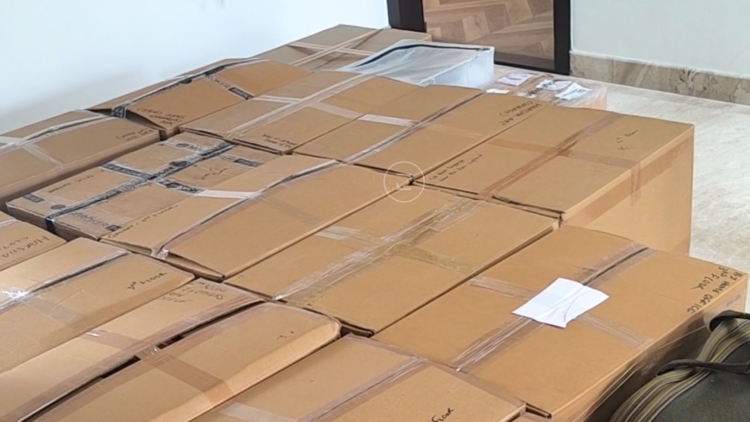Maintaining an organized home is a universal goal, but the specific challenges faced by Indian households can be unique. With extended families, diverse culinary traditions, and a penchant for collecting sentimental items, Indian homes often grapple with distinct organizational issues. In this blog, we’ll explore some common organization mistakes made in Indian homes and offer practical solutions to overcome them.
Kitchen
A space we often spend a lot of time in doesn’t get its due when it comes to aesthetic and practical organization. Some of the common organization mistakes we spot in kitchens include:
Storing food items in containers of different shapes and sizes
Storing everyday use items in hard-to-reach places
Placing similar items in different places
Using ill-fitting dividers, shelves, and storage containers
Buying organizing products without decluttering
Storing items in deep cabinets
Not decanting items
How to fix these problems
To begin with, never buy “new” solutions and expect them to work without first assessing what you have and measuring your spaces. Buy organizing products and storage solutions only after exploring what you really need and sizing items accurately, so that everything fits well and can be used efficiently.
Always categorize your kitchen items – whether they are dals and condiments, or even spatulas and plates. Store similar items in the same place, so you know where to look for something. No frantic searching!
Always take out items from their original packing and put them in jars (similar items in similar jars). You’ll feel less anxious while cooking. Also, avoid using empty jars of pickles, biscuits, and beverages to store items. Not only are they an eyesore, they can also be confusing, and most likely unsafe.
Finally, when you store things in deep cabinets, do so by putting items in bins so they don’t get lost or forgotten. It makes for easy accessibility too.
Bedroom
Here’s a space that must have a positive, relaxing vibe; and yet many bedrooms do the opposite, hence wrecking your sleep and sometimes even your relationship with the one you share the room with. Let’s look at some bedroom organization mistakes:
Not using functional furniture and storage.
Cluttered nightstand
No designated laundry space
Poor wardrobe system
Over-decorating
Too many piles
How to fix these problems
It’s important to assess the size of your room before you choose your furniture and storage. Some amount of open space is a must for easy movement and comfort.
Next, declutter. Clutter is the biggest mood spoiler in a bedroom. Piles of laundry, papers, books, and electronic items like AC remotes, chargers, headphones, etc. can cause anxiety. Keep only what’s essential on the nightstand, and ensure clean laundry is instantly put away.
For dirty laundry, create a drop system that’s away from your direct sight. Donate or discard clothes and accessories you don’t use anymore to create more space in your closet.
Finally, how much is too much decor? You need only a basic number of pillows and cushions, and only basic wall art that reflects a feeling of tranquility. Keep it simple and clean.
Read the post on sleeping better by reducing clutter on our LinkedIn page.
Common Spaces
Common spaces like the living room, entertainment room, dining room, etc. are harder to organize as they get the maximum footfall of every member of the house. Here are some common organizing mistakes we’ve spotted in these spaces:
Open spaces becoming drop zones
Not decluttering often
Hoarding digital items
Ignoring kids’ spaces
Poor paperwork management
Not letting go of sentimental items
Owning too much
How to fix these problems
Decluttering often becomes the responsibility of one person in a household – the one whom clutter bothers the most. To start with, delegate duties around the house to ensure everything is put back in its right place – from shoes to bags, from books to digital accessories, and from snack bowls to laundry. Being consistent with your house rules pays high returns eventually.
Make sure open spaces are given a role. For example, keep your dining table set with placemats and cutlery so they don’t become drop zones.
Read our blog on how to keep open surfaces clutter-free for more detailed tips.
Electronic items and paperwork must have designated storage space, so that all family members know where these items must be stored once they are used. An extra tip for paperwork is to digitize them and store them on computers.
For sentimental items that don’t serve you anymore, we recommend clicking pictures of them and letting them go. The tried and tested method to owning too much is to first let one item go to make space for a new one. This will also give you time to think if you really need something new.
Finally, don’t ignore kids’ spaces – they tend to remain cluttered. Involve your kids in cleaning up and putting things back, so it becomes a habit as they grow up. Just be patient.
Maintaining an organized Indian home is both an art and a science. By avoiding common organizational mistakes and implementing practical solutions, you can create a clutter-free and functional living space for your family. Remember, organizing is an ongoing process, so regularly reassess and fine-tune your approach to keep your home in great shape.

